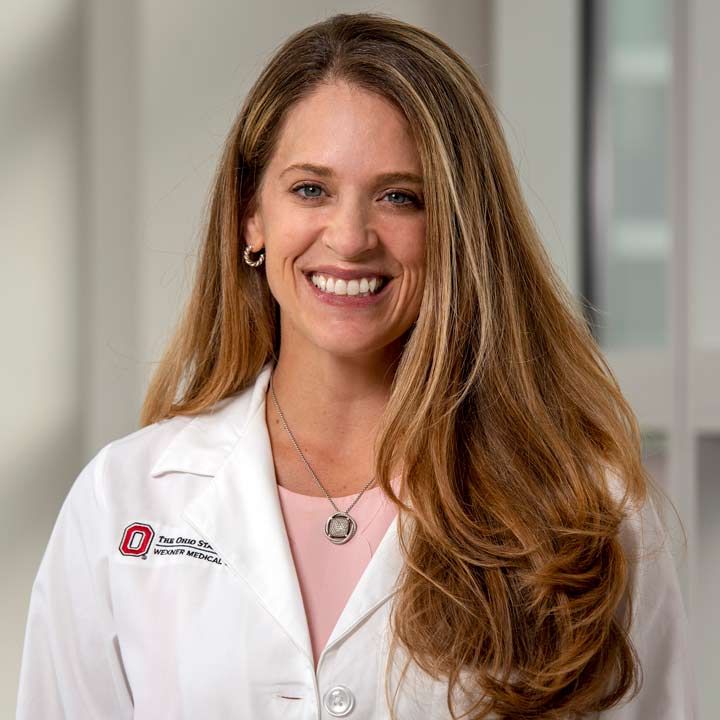 Amy Moore, MD, FACS, doesn’t have to look hard for her motivation. She sees it in the tears of her grateful veteran patients, in an unexpected rise from a wheelchair. She discovered it when she was just a child tagging along on visits to veterans hospitals with her father.
Amy Moore, MD, FACS, doesn’t have to look hard for her motivation. She sees it in the tears of her grateful veteran patients, in an unexpected rise from a wheelchair. She discovered it when she was just a child tagging along on visits to veterans hospitals with her father.
“I think what you know is because of how you’re molded, and I grew up believing that veterans matter,” says Dr. Moore, a surgeon-scientist specializing in hand and upper extremity surgery who was named chair of The Ohio State University College of Medicine’s Department of Plastic and Reconstructive Surgery in late 2019. “And I knew if I were a physician, I could do even more.”
Dr. Moore grew up volunteering at veterans hospitals with her father, who had served in the U.S. Army and worked as an administrator within the Veterans Health Administration. Her medical aspirations grew from there, turning to surgery after she had a knee operation at age 14, then narrowing in on nerves once she got into a laboratory.
At Washington University in St. Louis, where she completed her plastic and reconstructive surgery residency and peripheral nerve research fellowship, Dr. Moore studied under renowned surgeon-scientist Susan Mackinnon, MD, and discovered how she could effectively blend research with practice, her clinical questions driving her science.
“Many of my patients have life-altering pain,” Dr. Moore says. “That gives me a reason to study it to figure out what injuries cause the most pain, and why some have it while others don’t.”
The study of nerves is a challenging one. No two patients will experience the same injury, and no amount of imaging can reveal how someone is feeling. Conducting serial exams and tracking recovery—or lack thereof—helps paint a broader picture, but Dr. Moore is interested in the mechanism of what caused an injury in the first place. “Then it’s biology,” she says. “Can we prime biology and push that to create better results?”
Dr. Moore’s research and clinical work has helped not just veterans but much younger patients as well. Relying on her understanding of basic science, she pioneered a surgical intervention using nerve transfer to restore lower extremity function in children with acute flaccid myelitis, a rare polio-like illness that saw a dramatic increase in 2018.
Since 2014, she’s had three projects funded by the U.S. Department of Defense that have studied ways to alleviate pain and improve sensation after injury, including improving outcomes for war-injured patients. She’s also studying how patients respond to electrical nerve stimulation using affordable, off-the-shelf devices that have advanced beyond the clunky, time-consuming equipment of the 1980s.
At the Ohio State College of Medicine, Dr. Moore is primed to do even more. She plans to further elevate a world-class clinical program by expanding research and creating a military medicine program.
“We’re already a national leader in treating patients with nerve pain from amputations, and I’m here to help push us forward another step by adding research and novel surgical treatments for patients with pain or loss of function,” she says. “I’m confident that we’ll be successful because of the collaborative expertise at Ohio State.”
